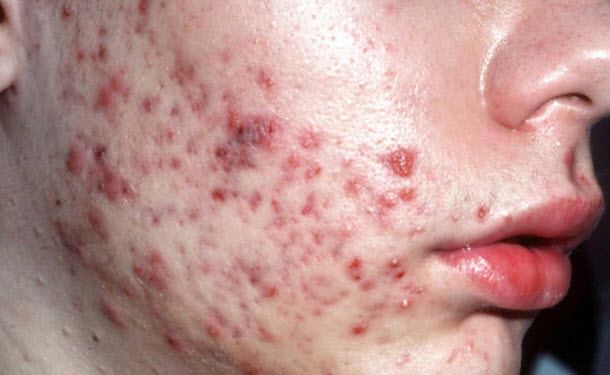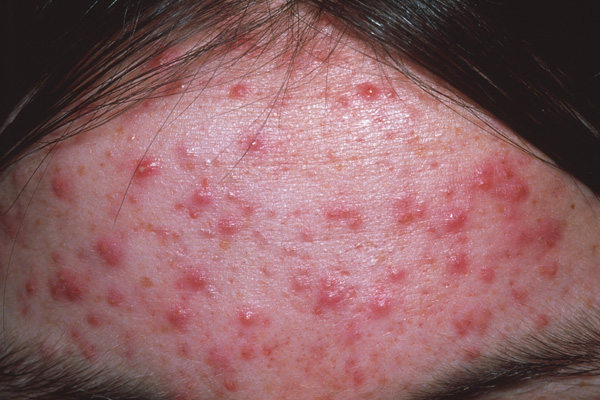Makindo Medical Notes"One small step for man, one large step for Makindo" |
|
|---|---|
| Download all this content in the Apps now Android App and Apple iPhone/Pad App | |
| MEDICAL DISCLAIMER: The contents are under continuing development and improvements and despite all efforts may contain errors of omission or fact. This is not to be used for the assessment, diagnosis, or management of patients. It should not be regarded as medical advice by healthcare workers or laypeople. It is for educational purposes only. Please adhere to your local protocols. Use the BNF for drug information. If you are unwell please seek urgent healthcare advice. If you do not accept this then please do not use the website. Makindo Ltd. |
Acne Vulgaris
-
| About | Anaesthetics and Critical Care | Anatomy | Biochemistry | Cardiology | Clinical Cases | CompSci | Crib | Dermatology | Differentials | Drugs | ENT | Electrocardiogram | Embryology | Emergency Medicine | Endocrinology | Ethics | Foundation Doctors | Gastroenterology | General Information | General Practice | Genetics | Geriatric Medicine | Guidelines | Haematology | Hepatology | Immunology | Infectious Diseases | Infographic | Investigations | Lists | Microbiology | Miscellaneous | Nephrology | Neuroanatomy | Neurology | Nutrition | OSCE | Obstetrics Gynaecology | Oncology | Ophthalmology | Oral Medicine and Dentistry | Paediatrics | Palliative | Pathology | Pharmacology | Physiology | Procedures | Psychiatry | Radiology | Respiratory | Resuscitation | Rheumatology | Statistics and Research | Stroke | Surgery | Toxicology | Trauma and Orthopaedics | Twitter | Urology
Related Subjects: | Nikolsky's sign | Koebner phenomenon | Erythema Multiforme | Pyoderma gangrenosum | Erythema Nodosum | Dermatitis Herpetiformis | Lichen Planus | Acanthosis Nigricans | Acne Rosacea | Acne Vulgaris | Alopecia | Vitiligo | Urticaria | Basal Cell Carcinoma | Malignant Melanoma | Squamous Cell Carcinoma | Mycosis Fungoides (Sezary Syndrome) | Xeroderma pigmentosum | Bullous Pemphigoid | Pemphigus Vulgaris | Seborrheic Dermatitis | Pityriasis/Tinea versicolor infections | Pityriasis rosea | Scabies | Dermatomyositis | Toxic Epidermal Necrolysis | Stevens-Johnson Syndrome | Atopic Eczema/Atopic Dermatitis | Psoriasis
Acne Vulgaris is the most common chronic skin condition of adolescence, affecting up to 80–90% of teenagers worldwide 🌍. It is a disease of the pilosebaceous unit, characterised by comedones, inflammatory papules/pustules, and in severe cases, nodules and cysts. Although often dismissed as “cosmetic,” acne can cause significant scarring and psychological morbidity. 💡 Remember: acne is not caused by poor hygiene.
📊 Epidemiology
- Peak onset: 12–18 years; often persists into the mid-20s, occasionally beyond.
- More severe in males (androgen-driven), but more persistent in females.
- Common across all ethnic groups; post-inflammatory pigmentation more problematic in darker skin tones.
- Strong genetic influence – family history is a risk factor.
🧬 Pathophysiology
Acne arises from a combination of 4 interlinked processes within the pilosebaceous unit:
- Sebum overproduction due to androgen stimulation of sebaceous glands.
- Follicular hyperkeratinisation → formation of keratin plugs (comedones).
- Colonisation with Cutibacterium acnes (formerly Propionibacterium acnes) → promotes inflammation.
- Inflammatory cascade → papules, pustules, nodules, scarring.
Additional factors: diet (high glycaemic index foods, dairy 🥛), drugs (steroids, lithium, antiepileptics), and endocrine disorders (e.g. PCOS).
🔎 Clinical Features
- Lesions: open comedones (blackheads), closed comedones (whiteheads), papules, pustules, nodules, cysts.
- Distribution: face, chest, shoulders, and back.
- Symptoms: may be itchy or painful; often psychological distress is prominent.
- Variants:
- Acne conglobata – severe, nodulocystic, sinus tracts, scarring.
- Acne fulminans – sudden, ulcerative acne with systemic upset (fever, arthralgia, ↑ESR/CRP).
⚖️ Differential Diagnoses
- Rosacea 🌹 (no comedones, later age, flushing, telangiectasia).
- Perioral dermatitis (papules around mouth, spares vermillion border).
- Folliculitis (monomorphic pustules, bacterial/fungal causes).
- Drug-induced acneiform eruptions (steroids, lithium, anti-TB drugs).
- Keratosis pilaris (rough follicular papules on arms/thighs).
⚠️ Complications
- Physical: Atrophic scarring (ice-pick, boxcar), hypertrophic scars, keloids.
- Pigmentation: Post-inflammatory hyperpigmentation (esp. darker skin).
- Psychological: Depression, anxiety, social withdrawal, suicidal ideation.
- Systemic: Acne fulminans (rare, emergency).
🧪 Investigations
- Diagnosis is clinical ✅ – based on morphology and distribution.
- Consider investigations if:
- Sudden severe onset → exclude drug-induced acneiform rash.
- Signs of hyperandrogenism (oligomenorrhoea, hirsutism, obesity) → screen for PCOS (testosterone, LH, FSH, prolactin, pelvic US).
- Refractory acne → consider culture/swabs (to exclude Gram-negative folliculitis).
💊 Management (Stepwise)
Treatment depends on severity, duration, and impact. Always consider psychological burden.
| Severity | First-line Treatment | Notes |
|---|---|---|
| Mild
(comedonal) |
Topical therapies:
|
Combine retinoid + benzoyl peroxide to ↓ resistance. Warn about skin irritation and photosensitivity 🌞. |
| Moderate
(papules/pustules) |
Add oral antibiotics:
|
Duration: 3–6 months. Avoid oral antibiotic monotherapy ❌. Reassess at 12 weeks. |
| Severe / Nodulocystic |
|
Specialist only. Monitor LFTs, fasting lipids. Pregnancy prevention programme essential 🚫🤰. |
| Females (hormonal) |
|
Useful in PCOS. Avoid oestrogen-containing OCP in smokers >35 or clot risk 🚭. |
🌍 Lifestyle & Self-care Advice
- 🧴 Use gentle cleansers; avoid excessive washing or scrubbing (can worsen irritation).
- 🚫 Avoid oily/cosmetic products that are “comedogenic.”
- 🍫 Diet: evidence is mixed, but high-GI foods & dairy may exacerbate acne in some patients.
- ⏳ Emphasise adherence: treatments take 6–8 weeks before improvement is seen.
🧠 Exam Pearls
– Comedones = diagnostic of acne vulgaris. Rosacea never has comedones. – Always combine oral/topical antibiotics with benzoyl peroxide to prevent resistance. – Isotretinoin is highly effective but carries risks: teratogenicity, mood disturbance, hepatotoxicity, ↑ triglycerides. – Psychological morbidity is common: always ask about mood & self-esteem. – Acne fulminans = sudden severe acne + systemic upset → dermatology emergency.
🖼️ Illustrations

